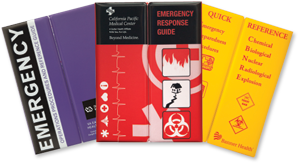Written by: Amy Rock
Hospital crimes are down slightly from the previous year, according to the International Association for Healthcare Security and Safety (IAHSS) Foundation’s 2023 Healthcare Crime Survey.
Disorderly conduct dropped from 56.8 incidents per 100 beds in 2021 to 52.2 in 2022, the survey found. Also down slightly is theft (from 5.7 to 5.6) and burglary (from 0.7 to 0.5). Additionally, the report determined violent crime, which includes murder, rape, robbery, and aggravated assault, dropped from 2.5 to 1.9, with aggravated assault accounting for 78% of all incidents in this category.
On the contrary, there was an increase in vandalism (from 2.6 to 2.8) and motor vehicle theft (from 0.4 to 0.6). Simple assault also rose significantly from 17.7 incidents per 100 beds to 22 incidents. From 2012 to 2019, the simple assault rate hovered around 10 incidents per 100 beds, but it has risen in each of the past three years and is now more than double that, IAHSS notes.
Survey participants were also asked if their hospital maintains statistics using the Workplace Violence Typology, which classifies both aggravated assaults and simple assaults into four types:
- Workplace Violence Type 1: Violent acts by criminals, who have no other connection with the workplace, but enter to commit robbery or another crime
- Workplace Violence Type 2: Violence directed at employees by customers, clients, patients, students, inmates or any others for whom an organization provides services
- Workplace Violence Type 3: Violence against coworkers, supervisors or managers by a present or former employee
- Workplace Violence Type 4: Violence committed in the workplace by someone who does not work there but has a personal relationship with an employee, e.g., an abusive spouse
or domestic partner
Of 178 responses, 71% said their hospitals use this typology compared to 78% in 2021. Among those reporting assaults by category, Type 2 was most common, accounting for 83% of aggravated assaults and 93% of simple assaults. In 2021, the results were 73% and 86%, respectively.
Hospital Security Practices
The survey also asked respondents if their hospital uses threat management teams in its security operations. Of 181 responses, 64% said they do use threat management teams. Comparatively, in 2021, only 57% reported using these teams.
No major differences were seen in the data between hospitals that use threat management teams and hospitals overall, the survey says. Last year’s report determined facilities that use these teams tended to have larger security staffs and higher rates of disorderly conduct, simple assault, and elopement, suggesting “hospitals facing higher rates of crime are more likely to implement threat management teams and similar measures.”
The report found fewer hospitals are utilizing a visitor management program to track entry and exit to and from their facilities by people other than staff and patients. In 2021, 82% of survey-takers reported having such programs in place compared to just 61% in 2022. The survey determined hospitals with visitor management programs had higher aggregate rates of simple assault and disorderly conduct than the all-hospital rates — 27.1 simple assault incidents per 100 beds compared to 22, and 60.5 disorderly conduct incidents compared to 52.2.
The survey notes these findings, though smaller in size, are similar to differences in last year’s report. As noted in 2021, the report says, “no conclusions should be drawn about the effectiveness of visitor management programs based on these results because, among other possibilities, hospitals facing higher rates of crime may be more likely to deploy such measures.”
New to this year’s survey, participants were asked to assess on a five-point scale how easy or difficult it has been to retain a full, qualified security staff. Of 189 responses:
- 4 described the process as “very easy”
- 22 described the process as “easy”
- 43 described the process as “neutral”
- 74 described the process as “difficult”
- 48 described the process as “very difficult”
Hospitals that reported security staff retention as “difficult” or “very difficult” had an average of 10 security personnel per 100 beds, compared to those that reported it as “easy” or “very easy” had an average of 7.7, suggesting recruiting and retention challenges increase as staffs grow larger, the report says.
This year’s survey findings reflected the decrease in healthcare worker retention, determining that hospitals averaged 9.5 full-time security employees per 100 beds. The result of the previous survey was 10.7 security personnel per 100 beds.
This article is shared with consent from Campus Safety – If you appreciated this article and want to receive more valuable industry content like this, click here to sign up for Campus Safety’s FREE digital newsletters!







